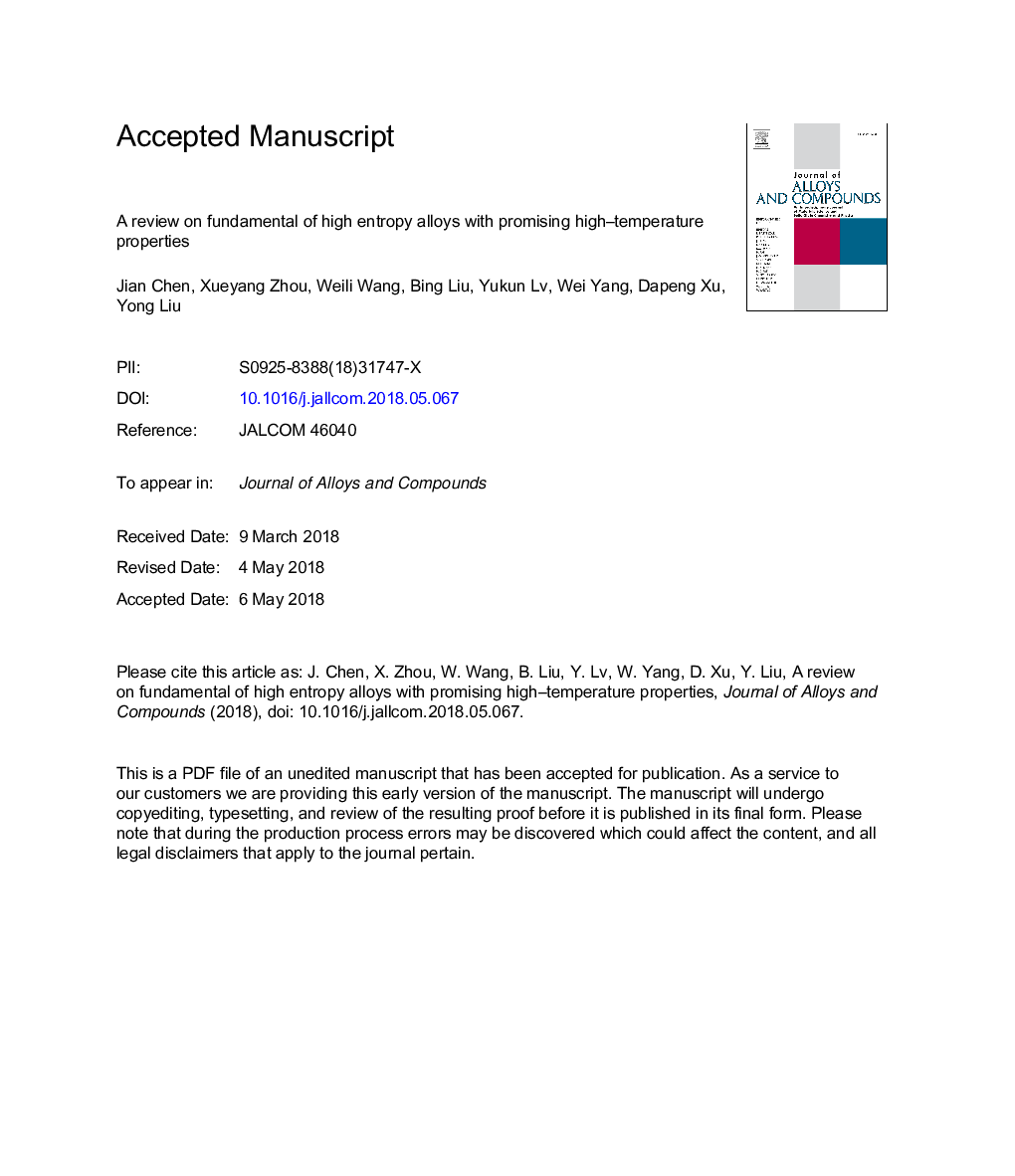| Article ID | Journal | Published Year | Pages | File Type |
|---|---|---|---|---|
| 7991016 | Journal of Alloys and Compounds | 2018 | 53 Pages |
Abstract
High entropy alloys (HEAs) have five or more principal elements with four core effects: high entropy, sluggish diffusion, severe lattice distortion, and cocktail effects. These effects lead to some distinct properties of HEAs. Some HEAs are promising for high temperature applications and have the potential to replace Ni-base superalloys as the next generation high-temperature materials, such as high entropy superalloys (HESAs) and refractory HEAs. The microstructures of HESAs consisting of γ and γⲠphases are similar to that of Ni-base superalloys. Refractory HEAs contain refractory elements with high melting temperatures. Thus, a number of aspects of HESAs and refractory HEAs are reviewed and discussed in the present paper, including microstructure, density, room-temperature mechanical properties, high-temperature strength, creep behavior, and oxidation resistance. Furthermore, a number of future research topics are suggested, emphasizing on developing high-performance high-temperature materials.
Related Topics
Physical Sciences and Engineering
Materials Science
Metals and Alloys
Authors
Jian Chen, Xueyang Zhou, Weili Wang, Bing Liu, Yukun Lv, Wei Yang, Dapeng Xu, Yong Liu,
